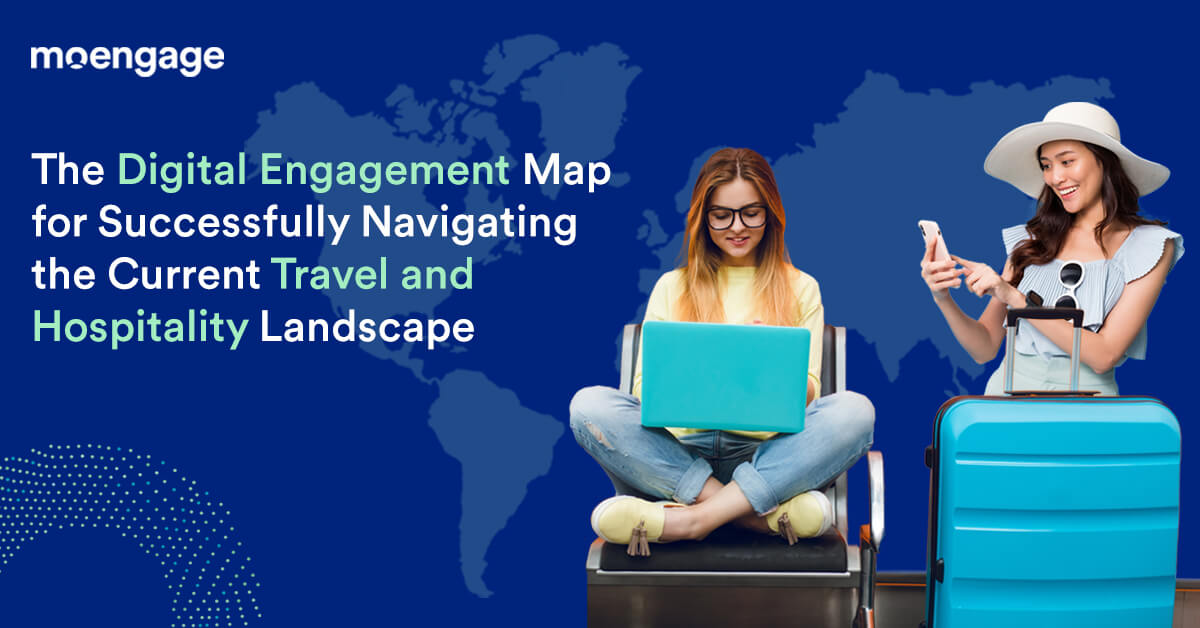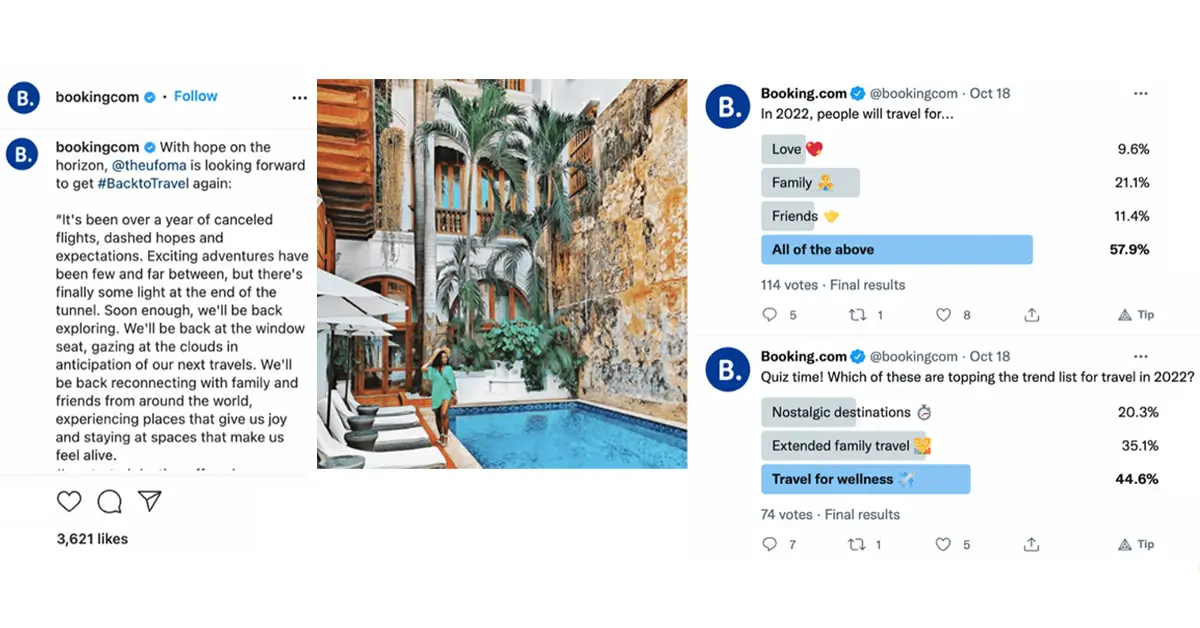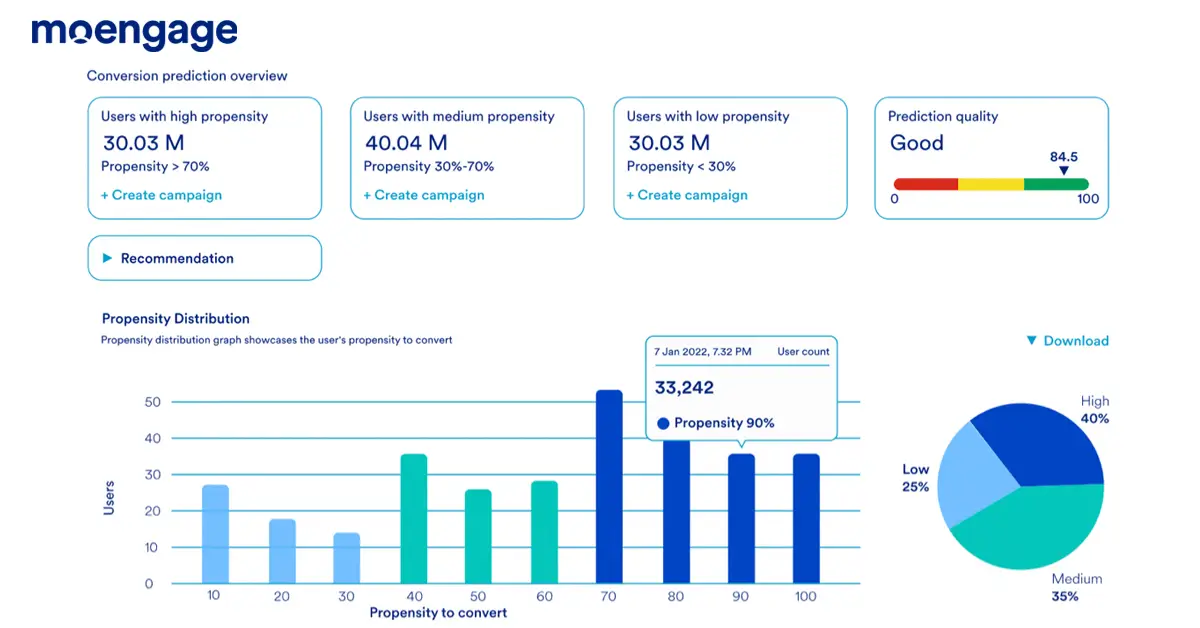The Digital Engagement Map to Successfully Navigate the Travel and Hospitality Landscape in 2025

Reading Time: 4 minutes
The post-pandemic comeback has led to continued growth in travel bookings. This significant rebound, alongside growing emphasis on the “work-from-anywhere” concept, has resulted in a gradual shift in consumer preferences and behavior — especially when it comes to their travel.
The Changing Travel Landscape
As a result of the increased travel demands, the booking window for travel and hospitality brands has reduced, with travelers locking into comparison sites to search for the best prices and benefits. Instead of being fixated on a particular brand, consumers are now seeking brands that offer flexibility to meet their needs and other benefits such as:
- Better discounts
- More add-on services
- Last-minute changes
- Buy now, pay later options
- Free cancellations
According to Ariane Gorin, the President of Expedia for Business, the trend is clear. From a “boom in international and business travel to a new focus on traveling for self-care”, she believes that “consumers value travel more than ever before and will continue to make time and money for it”.
With 365 million more passengers in North America and Mexico, and 550 million more flights taken by Europeans in 2022, per Mastercard’s report, the change in consumer behavior presents an immense opportunity for travel and hospitality brands. However, the key is to understand the importance of connecting with your audience and establishing a close relationship with them, if you wish to stand out from the crowd.
Understanding Your Customers
All customer interactions should be frictionless. The easier it is for consumers to find and purchase what they need, the more satisfied they’ll be. With the increasing demand for travel you need to get a clear understanding of who your buyers are, along with their interests and preferences. Only then can you make the most of valuable insights and personalize your customers’ experiences. Begin by asking:
- Do travelers wish to connect with their friends and family?
- Are they rescheduling trips that were canceled due to past travel restrictions?
- Are they looking for deals and discounted rates?
- Are they bucket listers who wish to take the ultimate vacation?
Modern customer engagement technology will allow you to leverage these insights for customizing your outreach to consumers accordingly, for example, personalizing content by topic, targeting by geolocation or segment, or creating special offers for those who are motivated by sales.
How Top International Brands are Engaging Travelers
To ensure an optimal customer engagement strategy, here are some best practices to keep travelers engaged and build loyalty that some of the top brands have successfully implemented.
Booking.com’s Customer Engagement Victory
Booking.com’s social media strategy has helped build a strong presence for the brand amongst travelers worldwide. By focusing on visual content, influencer connections, and Twitter polls, the brand has managed to reach new audiences on a global scale and strike up a conversation with their customers.

Winning Back Customers, the Delta Airlines Way
Delta Air Lines has adopted an omnichannel engagement strategy that targets various customer segments through online and offline touchpoints. The airline studied different customer cohorts, segmented travelers, and tweaked the campaigns to create a hyper-personalized experience for its customers. Furthermore, Delta’s three-step strategy is something that travel and hospitality brands can follow to create a unique customer journey.
| To explore these strategies in detail, check out our ebook on Customer Engagement Strategies for Travel & Hospitality Brands. |
Go-to Customer Engagement Strategies for Travel and Hospitality Brands
Segment Your Customers
Segmenting travelers with advanced behavioral attributes is the first strategy to implement. You can also segment customers into business, leisure, VIP, returning customers, or other categories, based on your segments’ interests.
Build a Holistic Customer Profile
Understanding the customer journey across multiple touchpoints is crucial. This can be achieved using an insights-led customer engagement platform that integrates all customer touchpoints and aligns key information about your customers, their preferences, and behavior patterns.
Hyper-personalize Experiences
With a 360-degree view of your customers and predictive AI, you can automate highly personalized trip recommendations. The dynamically targeted deals will apply to each individual customer, proposing different destinations and activities based on their personal preferences.

Make Your Customers Feel Valued
Being proactive is better than being reactive. Sending post-checkout thank you emails, directly addressing concerns or compensating customers for a bad experience with a future discount are some ways you can show customers that you care.
Retain Customers
Retention is a byproduct of nurturing. Creating a long-lasting relationship with your existing customers is the core step for increasing customer lifetime value. One way to do this is by sending personalized greetings for special occasions on the right channel of preference for each individual, along with an appealing promo code for future reservations.
The Way Ahead
With a pent-up urge to travel, customers have developed a sharp eye for benefits and expect more from brands. To account for the small booking window, travel and hospitality brands need to reconsider their strategies and replace them with customer-first strategies that prioritize relevant messages, on the right channel, at the right time.
Learn more about the travel and hospitality landscape with our ebook, where we can help you successfully navigate your way towards better customer engagement.















